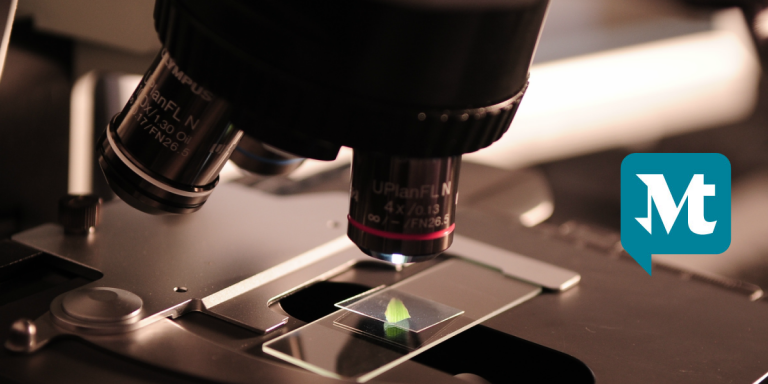
When Shalotta Sharp held up what looked like a tadpole-shaped beanie baby toy, about 20 nurses shouted, “Gonorrhea!”
“My dog likes this one,” she joked, as she put down the teaching prop — one of several “fuzzies” she uses to represent the virus or bacteria shape of common sexually transmitted infections.
Last week, Sharp was training nurses from across the state to be SANEs, sexual assault nurse examiners. There are only two certified SANEs practicing in the state.
Sharp is a woman on a mission: to train as many nurses as possible to conduct forensic exams — any medical exam that can also serve as evidence collection for law enforcement, specifically for sexual assault investigations. Sharp coordinates projects through the Mississippi Coalition Against Sexual Assault and works with the state health department, crime lab and attorney general’s office to put on the training.
A new law on the books in Mississippi – the decriminalization of prostitution for children under the age of 18 – aims to increase the number of those investigations, by bolstering human trafficking statutes and victim services. Though the law doesn’t directly provide for exams, advocates say it’s the first step to ensuring wrap-around services for the victim and initial stages of an investigation. The new law also gives law enforcement more power to intervene on suspected sex trafficking victims, and get them support services more quickly by streamlining the process. Some advocates say better coordination of services is still needed, and they worry that most law enforcement aren’t trained to interact with victims during the early stages of sexual assault intervention.
A myth Sharp wants to bust: sexual assault and trafficking are not a health care problem.
“SVU (TV show) is not reality. When law enforcement don’t get educated and hospital professionals don’t get educated, patients are not treated with trauma-informed care, patients are not believed and they walk away,” Sharp said, and she does not want to lose those patients, because they will likely never come back. “#MeToo has brought this to the forefront — patients are not believed. Forensic nurses have known this a long time — patients are not believed.”
She hopes the nurses she trains will eventually get certified — nurses need to pass a test in addition to the 40-plus hours of training. But she really just wants them to feel comfortable during these exams, and be able to help law enforcement if necessary — either through their expert testimony in court, or simply their evidence documentation and collection. She teaches everything from sexual anatomy, to interviewing and direct examination techniques and photography, to rape kit collection.
These nurses are vital in the immediate stages following a sexual assault, but the training doesn’t necessarily come with traditional nursing school.
Sharp rattles off facts, that you can tell bother her, but she knows them so well it’s second nature: Someone is sexually assaulted every two minutes — and less than half are reported. Most of those reported are not prosecuted, and according to the nonprofit Center for Violence Prevention, less than one percent of sexual assaults result in convictions.
Sharp wants the nurses to be comfortable with the tough questions too. To properly examine and treat a patient – they’re always patients to Sharp, not victims – and pass on evidence to law enforcement, SANEs need to know sequence of events and as many details as possible.
This can be tricky if the patient is not willing to share — for fear of repercussions, stigma attached to sexual assault or otherwise — or if they’re a child. Sharp stresses to the nurses that they are there first as a nurse to examine and treat, and second, to collect evidence. The patient also must consent to have evidence collected, even if they’re under age, she said.
A big part of forensic nursing involves educating law enforcement. Sexual assault can be hard to prove, because it can be difficult to show, she says. Most don’t involve physical injury, and even fewer show visible harm. Explaining this and anatomy, is part of the job — and so is supporting the patient through this process.
It’s never referred to as an “alleged” rape or sexual assault in the exam room. “No other patient population has an alleged injury — it’s not ‘alleged abdominal pain’ until proven,” she says. It’s presented and treated as the medical case that it is, just like sexual assault should be, she says.
For Sharp and other advocates, support starts with SANEs — a medical professional who can both treat and support victims at the beginning stages and let them know, “this is not your fault” and “we are here for you”.
There is only one shelter in the state for human trafficking victims, and it’s small with only six beds for adults. There are no dedicated spaces for children in the state and advocates say they send victims across state lines.
Sharp stresses sexual assault and trafficking victims need prioritized treatment and care, and standardized support services. “They need very long-term treatment and therapy, and there’s no funding for that and no resources for that. The outcome looks grim if we are going to throw a Band-Aid on a major arterial bleed, and it’s not going to work.”
It’s all a puzzle, she says. “We tell our nurses, ‘You are one piece of the puzzle. There is the medical piece, investigator piece, and nothing works in a vacuum. Even if this case is not adjudicated, this patient got good medical care, an investigator that believed them, an advocate that intervened on their behalf, and got a prosecutor who could explain to the patient if it went forward without conviction, it’s not their fault. If you don’t have everybody on the same page and everybody at the table, it’s a puzzle with missing pieces and we all know what that looks like.”
This article first appeared on Mississippi Today and is republished here under a Creative Commons license.